Tasting “The Secret of Bubbles – Do You Know the Differences”?
In a recent survey, it was found that a staggering 80% of wine enthusiasts struggle to differentiate between various types of sparkling wines.
Curious to uncover the mysteries behind the effervescent world of bubbles? Learn about the subtle yet significant differences that distinguish Champagne from Prosecco, Cava from Franciacorta, and more.
By understanding the unique characteristics and flavors of each sparkling wine, you’ll elevate your tasting experience and gain a newfound appreciation for these delightful effervescent gems.
Get ready to embark on a flavorful journey that will tantalize your taste buds and broaden your wine knowledge.
Key Points
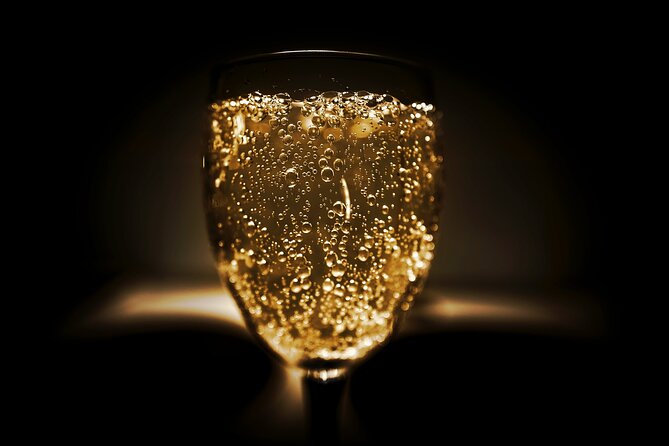
- Sparkling wine categories offer diverse flavors and textures.
- Different production methods yield unique characteristics.
- Champagne, Prosecco, Cava, and Franciacorta showcase distinct profiles.
- Sparkling rosé presents a range from sweet to dry with versatile food pairings.
Exploring Sparkling Wine Categories
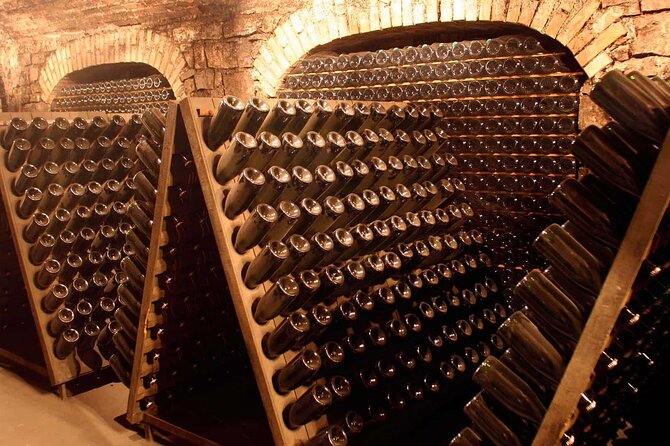
When delving into the world of sparkling wines, enthusiasts are in for a delightful exploration of diverse and effervescent categories. Bubbly variations range from the crispness of brut styles to the sweetness of doux varieties, offering a wide spectrum to suit different palates.
Each category presents unique sparkling nuances, whether it be the creamy texture of traditional method sparkling wines or the fruit-forward profile of Charmat method bubblies. From the renowned Champagne to the lively Prosecco and the elegant Cava, there’s a bubbling delight waiting to be discovered in every glass.
Exploring these sparkling wine categories unveils a world of flavors, aromas, and textures that promise to captivate and excite any wine enthusiast.
Understanding Champagne Vs. Prosecco
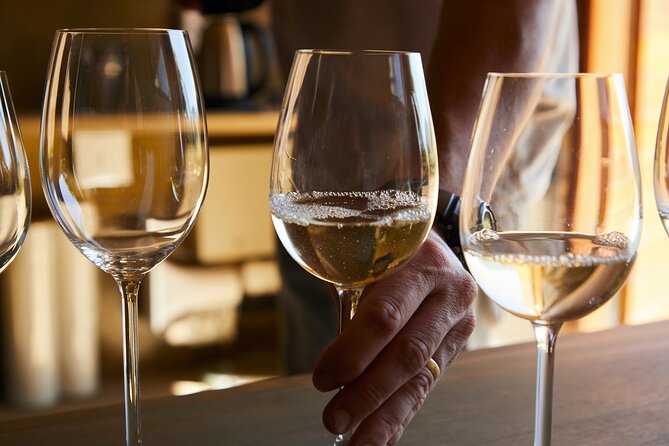
Comparing Champagne to Prosecco reveals distinct characteristics in their production methods, flavor profiles, and regional origins.
Champagne, crafted in the Champagne region of France, undergoes a labor-intensive production process known as méthode champenoise, involving secondary fermentation in the bottle. This method contributes to its complex flavors of brioche, citrus, and toasted nuts.
On the other hand, Prosecco, hailing from the Veneto region in Italy, typically follows the Charmat method, where secondary fermentation occurs in stainless steel tanks. This technique results in a lighter, fruitier profile with notes of apple, pear, and floral hints.
Plus, Champagne often ages longer on its lees, leading to a creamier texture, while Prosecco is best enjoyed young and fresh for its vibrant effervescence.
Decoding Cava and Franciacorta
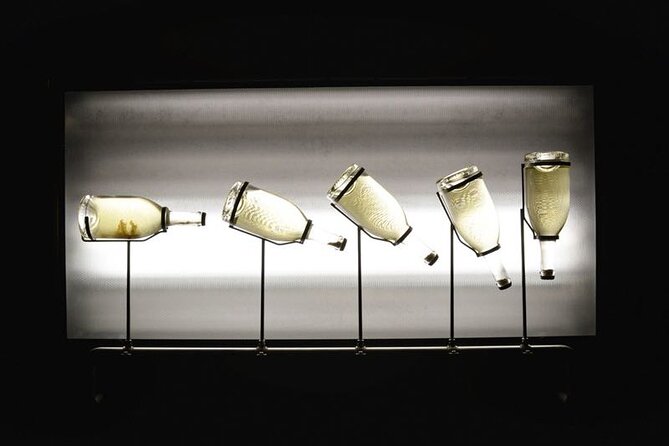
With intricate origins and unique production methods, exploring the world of Cava and Franciacorta unveils a rich tapestry of flavors and traditions. Comparing production processes, Cava is primarily made in Spain using the traditional method, while Franciacorta hails from Italy with similar techniques to Champagne production.
Cava often incorporates native Spanish grape varieties like Macabeo and Parellada, resulting in a crisp and citrusy profile. On the other hand, Franciacorta mainly uses Chardonnay and Pinot Noir grapes, offering a more complex and creamy taste.
When evaluating taste, Cava tends to be fruitier and fresher, ideal for casual sipping, while Franciacorta showcases a more elegant and sophisticated character, perfect for special occasions or pairing with gourmet dishes. The distinctiveness of each sparkling wine adds depth and variety to the world of bubbles.
Discovering the World of Sparkling Rosé
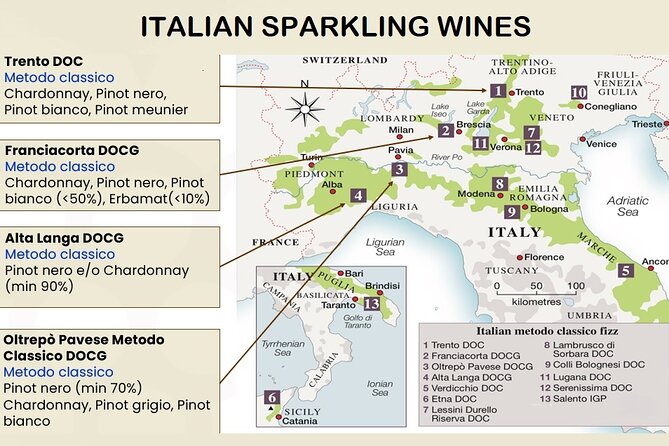
Set out on a flavorful journey through the effervescent world of Sparkling Rosé, where each sip reveals a delightful blend of elegance and vibrancy.
-
Sparkling rosé origins: Trace back to the region of Champagne, France, where the first sparkling wines were made.
-
Rosé variations: Explore a spectrum of hues from pale pink to deep salmon, each offering a unique flavor profile.
-
Bubbly expressions: Encounter sparkling rosés ranging from sweet to dry, with effervescence dancing on the palate.
-
Food pairings: Discover versatile pairings with seafood, salads, or even spicy dishes, enhancing the dining experience.
Enjoy the world of Sparkling Rosé, where tradition meets innovation, and every bubble tells a story.
Delving Into Sparkling Wine Production
Delving deep into the intricate art of sparkling wine production unveils a world where precision, patience, and passion converge to create effervescent masterpieces.
Sparkling wine fermentation is a crucial step in the process, where winemakers carefully control the second fermentation that creates those delightful bubbles. There are various carbonation methods employed, with the traditional method being one of the most renowned.
In this method, the wine undergoes a secondary fermentation in the bottle, capturing the carbon dioxide produced and leading to a fine effervescence. Another method is the Charmat or tank method, where the secondary fermentation occurs in a pressurized tank before bottling.
Each method contributes distinct characteristics to the final sparkling wine, showcasing the complexity and skill involved in its production.
Tasting Notes and Flavor Profiles
Exploring the intricate world of sparkling wines reveals a delightful array of tasting notes and flavor profiles that captivate the senses with each sip. When tasting sparkling wines, one may notice:
-
Bubble sizes: Varying from fine and persistent to larger and more effervescent bubbles, influencing mouthfeel.
-
Aging process: Providing complexities like toasty, nutty notes in well-aged sparkling wines.
-
Regional differences: Offering a spectrum of flavors from the crisp apple notes of Champagne to the tropical fruit hints of Prosecco.
-
Aromas: Ranging from floral and citrusy in some varieties to yeasty and biscuity in others, enhancing the overall tasting experience.
Pairing Sparkling Wines With Food
Let’s now uncover the art of enhancing your sparkling wine experience by expertly pairing it with a variety of delectable foods.
When it comes to food pairings, tasting techniques play a crucial role in ensuring a harmonious blend of flavors. Different sparkling wines, influenced by regional variations and production methods, can complement specific dishes.
For example, the light and crisp character of Prosecco pairs well with seafood, while the richness of Champagne can be elevated with creamy cheeses or truffle dishes. Understanding the nuances of each sparkling wine can help you create a delightful culinary experience.
Tips for Hosting a Sparkling Wine Tasting
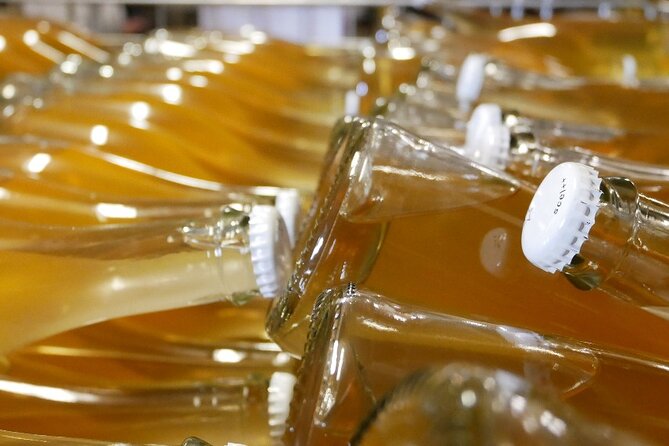
Hosting a sparkling wine tasting requires careful planning and attention to detail to ensure a memorable and enjoyable experience for your guests. To make the event a success, consider the following tips:
-
Hosting Etiquette: Greet guests warmly and introduce them to the wines being tasted.
-
Glassware Selection: Use proper glassware such as flutes or tulip-shaped glasses to enhance the aromas and flavors of the sparkling wines.
-
Food Pairings: Provide light snacks like cheeses, fruits, and crackers to complement the wines without overwhelming their delicate flavors.
-
Educational Component: Share interesting facts about the different sparkling wines being tasted to enhance the overall experience.
Common questions
Can I Bring My Own Bottle of Sparkling Wine to the Tasting Event?
Yes, guests can bring their own bottle of sparkling wine to the tasting event. Milano Wine Affair has a corkage policy that allows for custom pairings and tasting notes. BYOB adds a personal touch to the experience.
Are There Any Age Restrictions for Participating in the Sparkling Wine Tasting?
Age restrictions vary by country; legal requirements dictate no alcohol for under 18s in Italy. Enjoy sparkling wine’s health benefits responsibly. Confirm specific rules with the event organizer. Have a bubbly time at the tasting!
Is Transportation to and From the Tasting Venue Provided?
Transportation to and from the tasting venue is not provided. Visitors can explore shuttle services, carpooling, public transportation, or designate a driver. It’s recommended to plan travel arrangements in advance for a smooth experience.
Are There Any Opportunities for Purchasing Sparkling Wines at a Discounted Rate During the Event?
During the event, attendees can take advantage of special offers and discounted rates on sparkling wines. It’s a fantastic opportunity to purchase premium bubbly at great prices while enjoying a unique tasting experience.
Will There Be Any Non-Alcoholic Beverage Options Available for Those Who Do Not Drink Alcohol?
For those with taste preferences that don’t include alcohol, there will be non-alcoholic options available at the event. These alternatives cater to a variety of palates and ensure everyone can enjoy the experience fully.
Last Words
To sum it up, exploring the world of sparkling wines is truly a delightful journey filled with unique flavors and aromas. From the classic elegance of Champagne to the vibrant charm of Prosecco, each bottle holds its own story waiting to be discovered.
By understanding the differences between various sparkling wine categories, tasting notes, and pairing options, one can truly enhance their appreciation for these effervescent treasures. So raise a glass and toast to the magic of bubbles! Cheers to the sparkling adventure ahead!